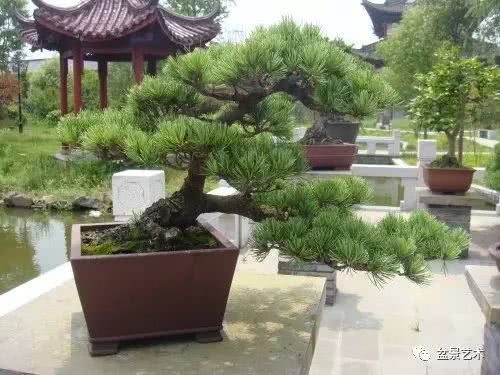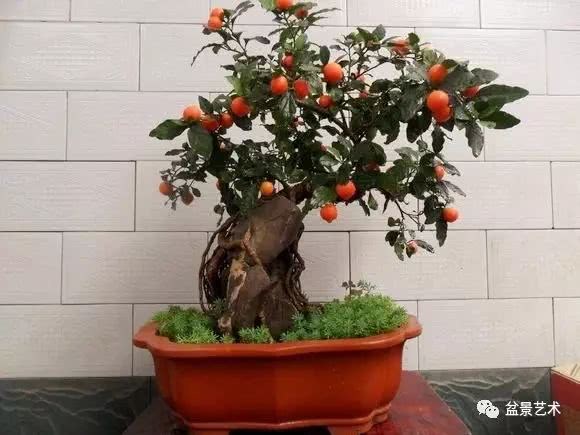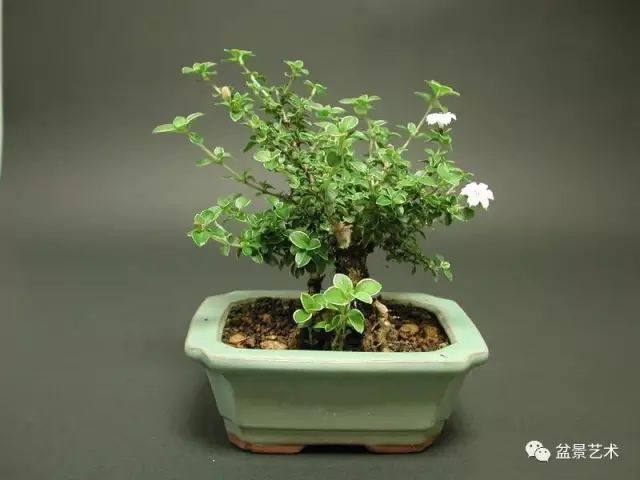Rapid prototyping of five-needle pine bonsai

1. Five-needle pine bud grafting and branch high grafting
Five-needle pine bud grafting and branch high grafting are two different forms, but their methods and effects are the same, the only difference is scion. The method is as follows:
The selection of rootstock selects the old pile of black pine which has the embryonic form of bonsai. For the grafted branches on the rootstock, the ones under six or seven years old without scales are generally the best.
Generally speaking, the best grafting time is from mid-February to early March before the bud will germinate.
The first condition for scion selection is that the buds and branches should be strong. The main bud is the best, and the branch with 3 branches is the best.
The number of scions to determine the number of buds and branches on a plate of black pine rootstock depends on the size of the crown and the length of the branches of the rootstock. In general, the long branches of rootstocks can be connected with 3-5 scions, and a short one is enough.
The grafting method is basically the same as ventral grafting, except that the grafting position is not at the base of the trunk, but on the branches.
Maintenance and management after grafting
A, the maintenance and management after budding is very simple, that is, it is placed in the open air without shade. In case of spring drought, spray water on the tree crown properly. Other management is the same as ordinary potted plants.
B. after branch grafting, move the basin into the greenhouse or plastic shed and spray frequently to keep it about 80% moist.
These two methods, after the grafting survived, should control the growth of rootstock branches, and gradually reduce it, in order to facilitate the growth of five-needle pine branches. When the five-needle pine branches are about to grow to the size of the sleeper trunk, cut off all the branches of the rootstock, which will take about three or five years.
two。 Multiple grafting of Osaka pine (Pinus elliottii)
Rootstock selection: after years of cultivation, beautiful shape, strong tree age of ten to a hundred years can be selected.
Scion selection: on the robust and pest-free Osaka pine, the two-year-old branch is selected as the scion, and the sunny place is the best.
Thinning branches: pruning and thinning branches of black pine on the basis of keeping its original shape.
The cut length of scion should be equal to that of rootstock, which is about 1cm, long on one side and short on the other.
In the main branches and parts of black pine, cut all the openings with a sharp knife, cut into the xylem 1/3, insert the scion into the incision, and the cambium of each other must coincide with each other.
It is properly fastened with plastic tape and is suitable for loosening and tightness.
1. Place of placement:
Crabapple bonsai should be placed in a place with sufficient light and good ventilation. When it is hot in summer, it is necessary to take proper shade to prevent the leaves from burning. Winter can be more cold-resistant, can be buried in the soil, can also be put into the indoor window.
2. Watering:
Usually keep the basin soil moist, but we must pay attention to prevent stagnant water in the basin, otherwise the root is easy to rot. The potted soil should not be too dry during the growing period of spring and summer, especially during flowering.
3. Fertilization:
Begonia bonsai should be fully fertilized in winter, and dry cake fertilizer or rotten barnyard manure and bone meal are the best. During the growth period, thin fertilizer and water are often applied except for the rainy season.
4. Turn the basin:
It is appropriate to turn the potted crabapple bonsai every 2 to 3 years, preferably after flowering in spring or autumn. When turning the basin, the root system should be trimmed and the base fertilizer should be put at the bottom of the basin.
5. Pest control:
Begonia has more diseases and insect pests: the main diseases are red spot, leaf spot, coal pollution, etc., which can be controlled by spraying Baume 0.5 degree stone sulfur mixture; the main insect pests are aphids, shell insects, red spiders, longicorn beetles and so on. 1200 dichlorvos solution can be used to control aphids, longicorn beetle eggs and shell insects, while Baume 0.5 degree stone sulfur mixture plus a small amount of acarone can be used to control red spiders.
- Prev

Culture and Management of Winter Coral in Pot
Winter coral planting, soil, water and fertilizer, light and other conditions, are conducive to the normal growth and flowering of plants, so without careful management can also flourish, red fruit. And potted plant because of the limitation that gets culture container, climatic factor...
- Next

Production Technology of Snow Bonsai in June
The production of snow bonsai in June the white flowers bloom in June snow and summer, and the flowers are as dense as snow, so it gets its name. June snow is an evergreen shrub, suitable for miniature bonsai, can be placed in the house to decorate the environment. At the table where the window is clear.
Related
- Wuhan Hospital Iron Tree Blooming Result Was Instantly Frightened by the Gardener Master
- Which variety of camellia is the most fragrant and best? Which one do you like best?
- What is the small blue coat, the breeding methods and matters needing attention of the succulent plant
- Dormancy time and maintenance management of succulent plants during dormancy
- Minas succulent how to raise, Minas succulent plant pictures
- What are the varieties of winter succulent plants
- How to raise succulent plants in twelve rolls? let's take a look at some experience of breeding twelve rolls.
- Attention should be paid to water control for succulent plants during dormant period (winter and summer)
- Watering experience of twelve rolls of succulent plants
- Techniques for fertilizing succulent plants. An article will let you know how to fertilize succulent plants.

